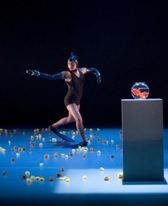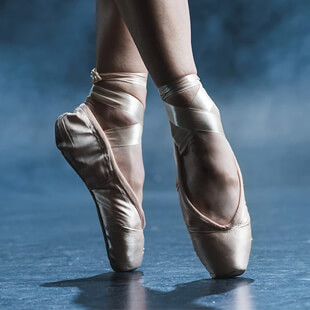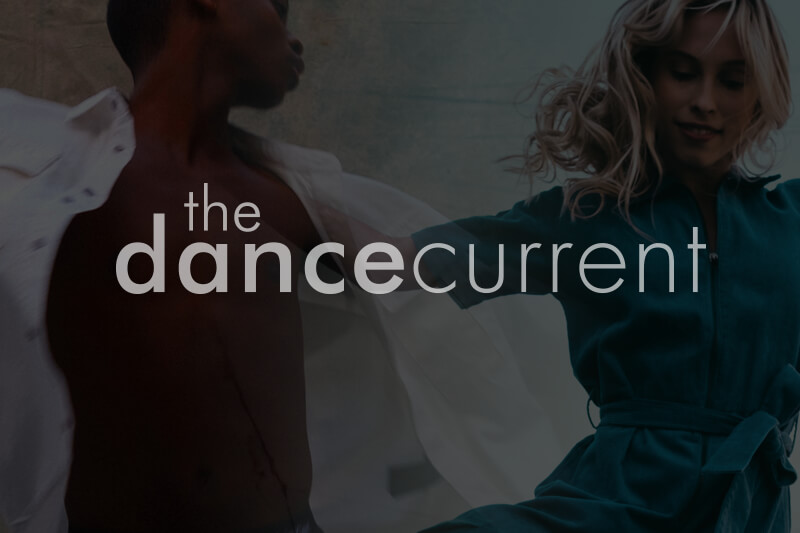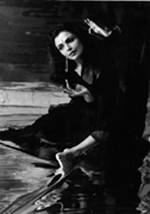The 2006 Kalanidhi International Dance Festival and Conference ran from September 22nd through October 1st and featured over 100 bharatanatyam, odissi, kuchipudi and chau artists from 7 countries in 30 performances, 2 intensive workshops in chau and bharatanatyam/zulu dance, and countless lectures, papers and dance chats.
Ever since I can remember, Artistic Director Sudha Khandwani’s Kalanidhi Festival and Conference has been an all-consuming event where members of the international and local dance communities spend over a week attending a vast array of performances and lectures, taking part in heated discussions and debates and networking like mad. This year, my professional and personal commitments (including rehersals for my performance at this festival!) prevented me from participating fully in the veritable orgy of dance, but I managed to take in about a third of what the festival had to offer. Here then are some observations, kudos and criticisms from my brief foray into this year’s extravaganza.
Dwindling funding, lack of curatorial vision and an apparent inability to market one’s way out of a wet paper bag have left some of Canada’s dance festivals with a funereal air. Not so at Kalanidhi. On opening night I feel like I’m at a festival. Dance artists, critics, scholars from India, South Africa, Malaysia and the United Kingdom have gathered. There are people who have driven up from the United States and anyone who is anyone in South Asian dance in Canada is here. There is a palpable sense of excitement in the air as people pore over the glossy sixty-six-page program, noting program changes and updates, making their dates for dinner and celebrating the fact that an event of this size and scope is being produced in Canada.
The opening act of Sutra Dance Theatre (Malaysia) lived up to all the hype I have heard about this company. Spectacular dancers, intricate, informed choreographic craft and stunning visual and lighting design combine and escalate through their performances of the caranam, pallavi and other works under the program rubric of “Spellbound”. It is classical repertoire delivered with such passion and distinction that it transcends didactic notions of traditional and contemporary. I’m struck by the sheer sexuality on stage. I find it very refreshing that, although the men embody a Western dance ideal — buff, sinewy and cut — the women are much more representational of actual women’s bodies, within a more eastern/South Asian ideal, and their sexuality reads loud and clear as well. Even in the tried and true moment where a single male dancer representing Krishna is surrounded by the female dancers in the role of milkmaids — these women dancers project strength and individuality that steals the focus from the central male character featured in the choreography. The absolute excellence of the company is met with deafening enthusiasm: wolf whistles and thunderous applause make me feel like I’m at a rock concert rather than a dance show.
The legendary institution Kalakshetra College of Fine Arts (India) founded in 1936 presented a program entitled “Kalakshetra Today”. I had been eagerly looking forward to my first opportunity to see some of the spectacle associated with this company’s dance drama presentations. To my surprise, their presentation seemed to be looking backward to the form’s soloist roots. The dancers were technically proficient, but I found no value in watching two of them, splitting centre, executing a keerthanam. It seemed that no thought had been given to the spatial structuring involved in presenting a solo as a duet, and instead of feeling enriched by seeing two different interpreters dance the same material, I just wished that they had had a good rehearsal director. Similarly, the restructuring of the ashtapadi from a solo to a trio left me feeling thoroughly disengaged, as the dancers did not relate to each other at all. Rather it seemed that they were all still dancing with the ubiquitous imaginary friend of the bharatanatayam soloist.
Saturday night’s programming expanded to include three companies and a return to speeches, as Professor C.V. Chandrashekar (India) was presented with a lifetime achievement award (the first of many presented throughout the remainder of the festival). Finally the program began with the accomplished soloist Shanta Rati Misra (India). She performed a spirited version of the classic “Krishna Shabdam”, delivering the role of Radha with the usual sauciness and coquetterie required, but with an underlying hint of condescension. It was as though she was patronizing Lord Krishna, implying that though he is divine, he is just a man and she knows just how to get him. She also danced a kuchipudi interpretation of a thumri (which is traditionally from the kathak repertoire) and brought an interesting twist to tillana by performing on the rim of a brass plate. I have mixed feelings about Misra’s choice to speak to the audience before each piece; surely she was aware that she was dancing before a savvy audience. However, as the festival progressed, it becomes obvious that what was once intended to be a temporary way to bridge the gap for audiences has become very much the norm.
Without benefit of an intermission, the audience was then treated to what seemed to be the full-length production of Menaka Thakkar Dance Company’s (Canada) “Chitra Warrior Princess”. Lush sets, moody lighting and voice-over narration ensured that we fully understood the story of a woman’s search for her identity and self-definition. Although the dancing was lovely and the choreography held my interest, the literal nature of the script only managed to give surface treatment to a complex story and seemed redundant when paired with the narrative techniques of odissi and bharatanatyam.
When intermission arrived at last it was past 10pm (with a 7:30 curtain!). At any rate, I was exhausted and, despite my interest in Tribanghi Dance Theatre (South Africa), I accepted a ride from someone who had also hit the wall for the evening.
Mavin Khoo Dance (United Kingdom) was originally scheduled to perform at the Sunday matinee. However, when the company’s expected funding (in the form of a British Council Travel grant) did not come through, the festival made substitutions to the program. (Only at Kalanidhi would one cancellation be replaced by two acts.) There was also the presentation of a Lifetime Achievement Award to Dr. Padma Subramaniam. The resulting program was so long that many audience members came and went between acts, self-regulating their dance intake. I had a conversation about this with some of my colleagues during intermission. We all agreed that the programs were incredibly long, and that it seemed to be too much to ask an audience to endure. However, we understood the difficulty in bringing companies from all over the world and holding them to twenty-minute slots. Finally we all had to admit that, although we were having issues, there were many audience members who seemed to accept and even enjoy the mind-numbing variety of performances.
The performances began with Priyadarshini Govind (India) who performs bharatanatyam with dizzying athleticism and speed while maintaining the form’s groundedness and grace. The choreography of her varnam is interesting in that, woven into the abstract dance sections, are references to Nataraja’s cosmic dancing. She radiates a bravura confidence in her javali, portraying a married woman pushing her husband out one door and inviting her lover in through another.
Next up was Ravi Mony (Canada) in the quintessential kuchipudi classic “Bhamakalapam”. Mony is recognized as one of the few male disciples of Guru Padma Vibushan Dr. Vempati Chinna Satyam, who is still performing Stri Vesham (male dancer in female role). Originally the role of Madhavi was to have been danced by another male dancer, Vedantam Venakata Naga Chalapati (India). Last minute visa troubles prevented this from happening, and Shanta Rati Misra (also a disciple of Chinna Satyam) gamely stepped into the role. It is a credit to Mony that while appearing onstage with a female dancer he managed to hold his own as a stately and dignified Satyabhama.
One of the additions to the program was soloist Aadith Narana Seshadri (India). He is a charming exponent of bharatanatyam who has recently been a guest with the Menaka Thakkar Company. He is a lyrical dancer and in “Amma Ananda Dayini” he absolutely embodied the music; his execution of complex footwork in his self-created tillana was crisp and clean.
The second addition to the program was a return of Sutra Dance Theatre who this time presented a more contemporary program of works. Once again the company’s dancers shone. Artistic Director and choreographer Ramli Ibrahim’s clearly realized vision conveyed a range of images of the Tantric interpretation of the female energy and spirit.
The performances by Govind and Sutra Dance Theatre highlight one of the ongoing problems in trying to define contemporary as it pertains to classical Indian dance forms. Govind’s interpretations — deliberate manipulations of the structure of the varnam — are very definitely contemporary in the context of bharatanatyam, and Ibrahim’s themes are contemporary and clearly not from the repertoire of odissi, but both are costumed and set to music in what could be described as a traditional manner. I hear several audience members comment that they had been expecting something very different.
Tuesday night’s program (on which I appear with Louis Laberge-Coté in our work “Lingua Franca”) brings up another one of the ongoing issues at Kalanidhi: the balancing act involved in presenting contemporary and classical work. The program opens with India’s Kumkum Mohanty performing solo odissi repertoire, followed by Canada’s Alakananda Nath performing solo bharatanatyam, each for about forty-five minutes. Imagine the shift the audience had to make then, as Louis and I appeared onstage clad in shorts and performing a completely abstract work for a mere twelve minutes. I disagree with some who feel that the programs should be split along classical and contemporary lines. However, I do feel that some consideration should be given to the content of the work and how it is contextualized within the diversity of artistic practice.
Wednesday was the first day I was able to attend any of the conference sessions. I was told by one of the out-of-town delegates that attendance had been low to that point and that few local artists had been around unless they were presenting. Dr. Sunil Kothari gave a sometimes-rambling yet informative paper on the history of kuchipudi and its development in the last century. He conscripted Shanta Rati Misra and Ravi Mony to animate his discussion and it was quite moving to see these two students of Guru Padma Vibushan Dr. Vempati Chinna Satyam, each living on a different continent, come together effortlessly for impromptu demonstrations of their Guru’s technique.
Next up was Process Revealed, where performers from the previous evening’s performances speak about their work. On this day, Kumkum Mohanty, Louis and I were joined onstage by Sunil Kothari who moderates the session . I’ve run the gauntlet at many a Kalanidhi before and I had warned Louis to be prepared for intellectual arguments, indignant accusations and off-the-wall questions. To my immense relief I discovered another one of the evolutions that has taken place at Kalanidhi: people seem to have come to terms with the fact that contemporary work is here to stay and that it does not threaten classical work. We were asked intelligent questions that came from a genuine place of curiosity about our process. The temperature rose during the discussion with Mohanty: I can’t even begin to explain the depth of the ensuing conversation about the evolution and history of odissi, but I wish that some of Toronto’s regular season dance talks could be as informed and passionate. One of the participants pointed out how wonderful it was that Kalanidhi was providing the venue for this discussion, commenting that “even in India we don’t have these debates”. The session went overtime and, although I had a ticket for the evening show, I headed home for some needed respite.
My last opportunity to participate in the festival was during Friday’s conference. Indian Dance in the Diaspora was the topic, with presentations by Piali Ray (United Kingdom) and Professor C.V. Chandrashekar (India). Ray is an articulate and impassioned advocate and she drew a clear map of the path she has taken under the auspices of her organization SAMPAD to promote South Asian art and artists in the UK, where there is a large South Asian diaspora. Professor Chandrashekar’s diaspora refers to culture rather than people: he spoke of his experiences teaching bharatanatyam to Japanese dancers, a collective of whom performed the next day at the festival.
As I was leaving, I was accosted by festival co-producer Rasesh Thakkar. Because of my association with “The Dance Current”, he was adamant that I should come the evening that former “Toronto Star” dance critic William Littler was to be presented with a Lifetime Achievement Award and that I should attend the session on critiquing Indian dance in India and abroad. I told him that I couldn’t for personal reasons and asked him to try and encourage other local artists to get involved on a broader scale. Over the next few days, I checked in with some colleagues and we all found that we didn’t quite make it to everything. About the shows I did not see, I heard that Sujata Mohapatra (India) blew the audience’s mind with her performance, and that remounted excerpts of “Purnima” by InDance (Canada) and “Loha” by Sinha Dance (Canada) were very well received.
I am saddened to hear rumours that this might have been the last Kalanidhi Festival: too many years of fighting for funding and no one lining up to do all the work are cited as reasons. This is especially disheartening because what became clear to me at this year’s festival was that it has had an impact far beyond Toronto and Canada. Kalanidhi Fine Arts is an organization with true international importance and its contribution to Indian dance on a worldwide scale is tremendous. I hope that the rumours aren’t true and that for years to come I will have the opportunity to continue to witness, participate in and write about this venerable festival.
Tagged: Bharatanatyam, Indian, Performance, South Asian, ON , Toronto




